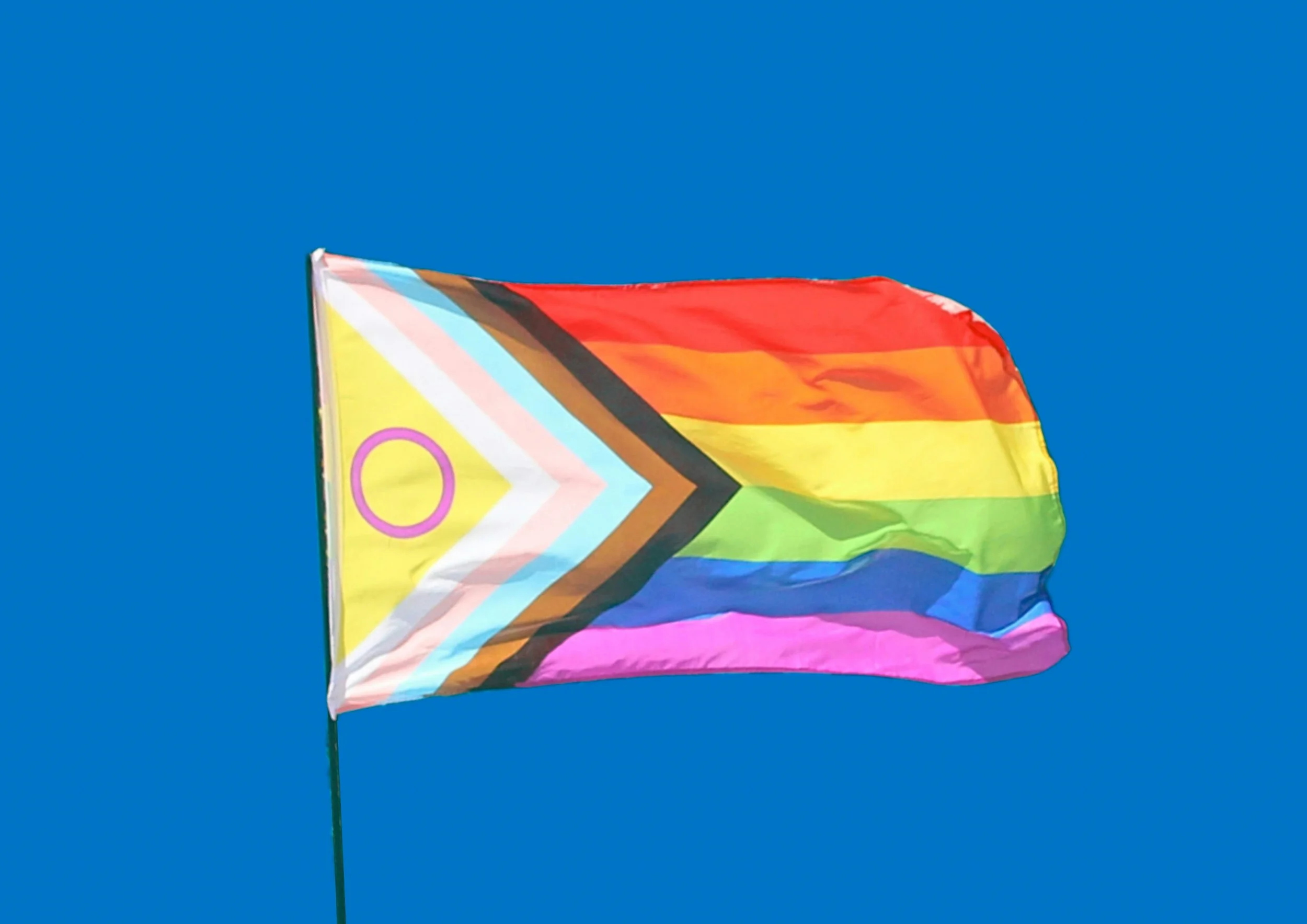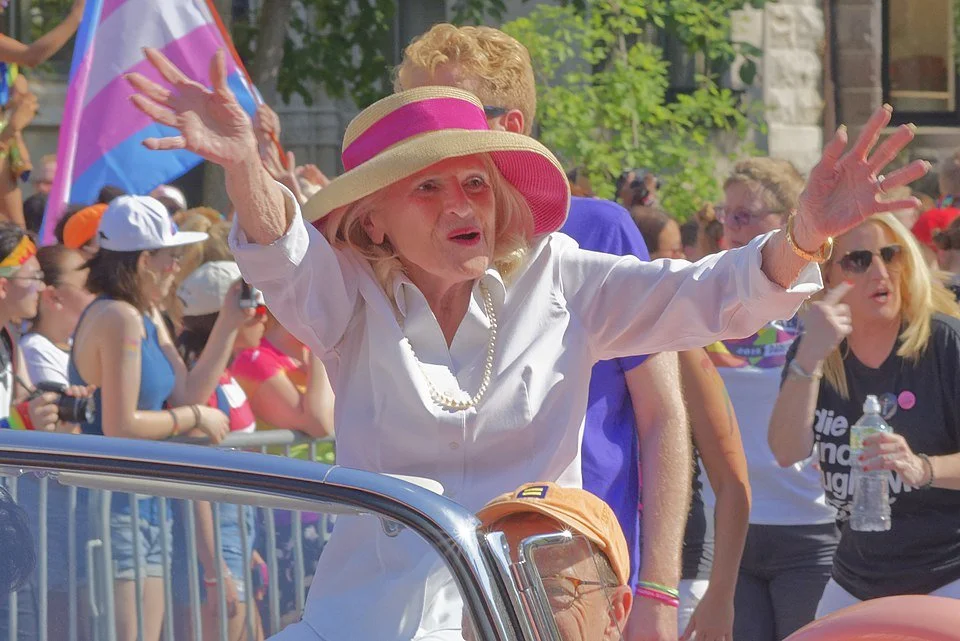Celebrate Pride Month with These Queer Tech Pioneers
Written by Alex Fisher
Thumbnail & Banner Photo by Sophie Popplewell on Unsplash.com
June is officially Pride Month, even though Halifax Pride is held in July. Pride is a time to celebrate the 2SLGBTQIA+ community and all the challenges they have overcome. With the rights of transgender and non-binary people currently being eroded in the United States and targeted by some Canadian leaders, it’s all the more important to celebrate queer history and the diverse sexualities and gender identities that make up our world.
There have been many queer people throughout history that have made significant contributions to the development of computers and technology. To celebrate Pride Month and queer history, we’ll be looking at a handful of these people, their lives, and the technological and social developments they pioneered.
Alan Turing (1912 – 1954)
Alan Mathison Turing was a British mathematician who made significant contributions to several fields, including computer science and artificial intelligence, a topic we’ve discussed in numerous Journal articles. Turing first rose to prominence in 1936 when he was able to prove that there is no solution to the Entscheidungsproblem, the question of whether or not any given problem is universally true. He accomplished this by creating an imaginary device he called a ‘universal Turing machine,’ which formed the mathematical basis for modern computers. After the onset of World War II in 1939, Turing moved to Bletchley Park to assist with the development of a code-breaking device that could decipher messages from the German Enigma machines. This eventually allowed for upwards of eighty thousand German communications to be decoded each day, shortening the war by up to two years. Then, in 1942, Turing was the first to develop a way to decipher messages sent by the Germans’ new cipher machine, nicknamed ‘Tunny.’
After World War II, Turing was recruited to work at the National Physical Laboratory (NPL) in London. It was at NPL where, based on his ideal of the universal Turing machine, Turing designed the first digital computer which he called the Automatic Computing Engine, or ACE. Several digital computers were then built based on the ACE design. During this time, Turing also became fascinated with the idea of a machine that could think for itself and modify its own programming.These are the foundational ideas behind artificial intelligence, or AI, and Turing even gave a public lecture on the topic as early as 1947. He also invented the Turing Test, which he originally called the ‘imitation game.’ The core idea behind Turing’s imitation game was a question and answer test with three participants communicating through text: one human asking questions, one answering, and a computer also providing responses to the questions. If the person asking the questions, the ‘judge,’ was unable to distinguish between the computer and the other person, then it could be determined that the machine was able to think.
Despite the fact that Alan Turing was instrumental in saving millions of lives and ending World War II, he was arrested and charged with “gross indecency” in 1952 for admitting to having sex with another man. His career was effectively ruined by the charges, and he was forced to choose between going to prison or undergoing chemical castration. Having chosen the latter, Turing lived on his own until he died from cyanide poisoning in 1954, mere days before his forty-second birthday. While his death was officially ruled a suicide, there are still some questions about his cause of death that have never been answered.
Turing’s contributions to the war effort were never made public until 2012. In 2013, he received an official pardon from Queen Elizabeth II. His life inspired a biography and a critically acclaimed—but largely inaccurate—film titled The Imitation Game. Today, Alan Turing’s legacy lives on as a gay man and important queer figure, the founder of the field of artificial intelligence, and the father of modern computer science.
Sophie Wilson (born 1957)
Sophie Wilson in 2013. Picture taken by Chris Monk. Used with permission under the Creative Commons Attribution 2.0 Generic license.
Sophie M. Wilson is a British computer scientist whose contributions to the processor industry were instrumental to the development of smartphones. Her career began in the summer of 1977. While on break from the University of Cambridge, Wilson developed an automated cow feeder, demonstrating her technical prowess. The next project she began to develop was the Acorn System 1—an early consumer microcomputer, and the first personal computer sold by Acorn Computers—which was released in 1979 as the Acorn Microsystem. It was succeeded in 1981 when Wilson and her colleague Steve Furber developed the BBC Microsystem, also known as the BBC Micro. The BBC Micro ran on the BBC BASIC programming language, which was primarily made by Wilson. Well over a million of the devices had been sold by the end of its lifespan, including to thousands of schools in order to promote student literacy with computers.
Over the next eighteen months, Wilson and a team of less than ten people developed a new type of processor they called the Acorn RISC Machine (RISC stands for Reduced Instruction Set Computer), or ARM . The first ARM processor was incredibly efficient, outperforming competing processors while drawing only a tenth of a watt of power. For reference, modern processors using the x86 architecture can use between 55 to 150 watts of power. Wilson then went on to help design the ARM3, ARM610, and ARM700 processors. She was also on the team that created the ARM7500FE single-chip computer. In the late 1990s, Wilson developed the Firepath SIMD LIW processor and co-founded the company Element 14, which was sold to Broadcom for six hundred million dollars in 2000. The ARM architecture is still used in a variety of devices that range from tablets and MacBooks to calculators and game consoles, totalling over three hundred billion devices as claimed by the company that now owns the architecture. In 2017, Wilson received an honorary doctorate for her many contributions to the field of computer science.
Sophie Wilson is not only remarkable for her many contributions to the world, but also for being a transgender woman in a very male-dominated field. She transitioned in 1994, helping to pave the way for gender diverse people in STEM. While there were no accessible sources regarding her personal struggles, she likely would have faced discrimination as transgender people are discriminated against in many STEM fields, even still. Today, Wilson continues to work at Broadcom and, as recently as 2022, has received even more awards for her many contributions to modern computing.
Edith Windsor (1929 – 2017)
Edith Windsor in 2017. Picture taken by Rex Block. Used with permission under the Creative Commons CC0 1.0 Universal Public Domain Dedication license.
Edith “Edie” Windsor was an American computer scientist known for her work on operating systems and programming languages. She graduated from Temple University in 1950 and in 1955 went on to study for a master’s degree in applied mathematics at New York University. It was during this time that Windsor was able to work with the Atomic Energy Commission’s UNIVAC system, essentially the first commercially available digital computer in the United States. After graduating in 1957. She started working for tech giant IBM in 1958. IBM still exists today as one of the world’s largest tech companies, building on the company’s historic legacy. Eventually, Windsor was promoted to IBM’s highest technical rank: senior systems programmer. This promotion was attributed to her exceptional ability to read and debug code. While there is no list detailing her exact accomplishments, Windsor is recognized as an important part of the revolution in computer programming. In 1987, she was honoured as a pioneer in operating systems at the National Computing Conference. Windsor retired from IBM in 1975 and founded PC Classics, a consulting firm that specialized in helping companies with major software development projects.
In the late 1940s, when Windsor was studying at Temple University, she began to realize that she was a lesbian and even dated and fell in love with a woman. Despite this, she married a close friend of her brother shortly after graduating. The marriage lasted less than a year, and they parted on good terms after Windsor admitted that she wanted to be with a woman. She moved to New York and found herself uncomfortable with the queer scene at the time as it was frequently raided by police, but eventually she became friends with a group of gay men. In 1963, while at a restaurant, Windsor met a psychologist and Dutch immigrant named Thea Spyer. It wasn’t long before the two found themselves dancing the night away at parties. To hide the relationship from her coworkers, Windsor claimed to be dating Spyer’s brother Willy. In actuality, Willy was Spyer’s childhood doll. Though some members of their families disapproved, Spyer proposed to Windsor with a diamond brooch in 1967. Spyer was diagnosed with multiple sclerosis in 1977 and with a life-threatening heart condition in 2007, spurring their decision to travel to Toronto and marry, finally fulfilling their forty-year-long engagement. In 2009, Spyer died peacefully in the couple’s home after forty-six years of being together. Their life together inspired a 2009 documentary titled Edia & Thea: A Lifelong Engagement.
Spyer left Windsor her estate, but because the United States government didn’t recognize their marriage under the Defense of Marriage Act (DOMA), Windsor was given an over $350,000 inheritance tax. She contacted Roberta Kaplan, a corporate litigation attorney and a lesbian herself, and the two fought against DOMA. In 2013, the United States Supreme Court ruled in favour of Windsor and Section 3 of DOMA was overturned, granting marriage equality for same-sex couples and paving the way for same-sex marriage to be legalized nationwide in 2015. Windsor remarried in 2016 to Judith Kasen, and she passed away in 2017.
Edith Windsor is remembered now for her contributions to the development of programming and the computer scene as well as for her fierce activism following the Stonewall Riots. She received many awards for her efforts, and the Edie Windsor Champion for LGBTQAI+ Equality Award was named after her. In 2013, she was even a runner-up for Time’s Person of the Year.
The history of queer people in tech cannot be summarized in a single article. Tim Cook, CEO of Apple, came out as gay in 2014. Lynn Conway, a transgender woman, was instrumental in designing the microchips that nearly all electronics now use. Audrey Tang, who worked with the Taiwan government to track the stock of masks during the COVID-19 pandemic, is non-binary.
The world is a better place because of the people we discussed in this article and all of the queer people in the tech industry. Their contributions have been immense, often in spite of underrepresentation, harassment, and discrimination—all against people who simply want to live their lives and be happy. Nonetheless, they have driven innovation in technology and society. This Pride Month, be sure to celebrate their lives and their diversity. If you want to get involved, Halifax Pride is always looking for volunteers!
Let us know your thoughts on our social media pages, and if you enjoyed this article, be sure to check out our LGBTQ+ column.






